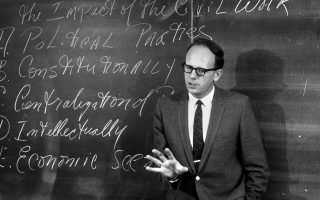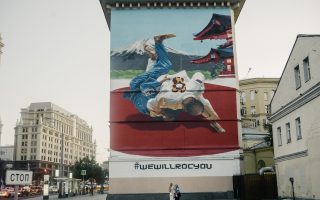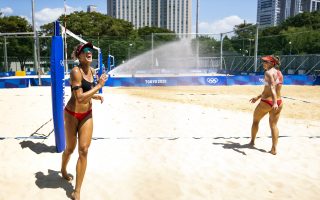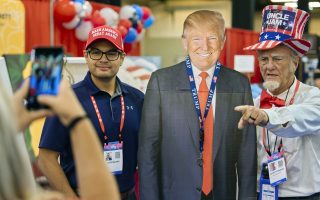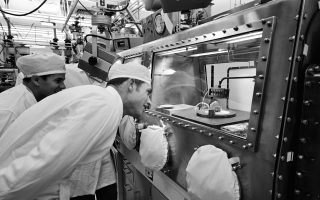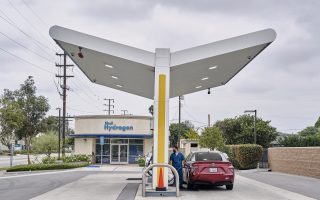Louise Fishman, who gave abstract expressionism a new tone, dies at 82
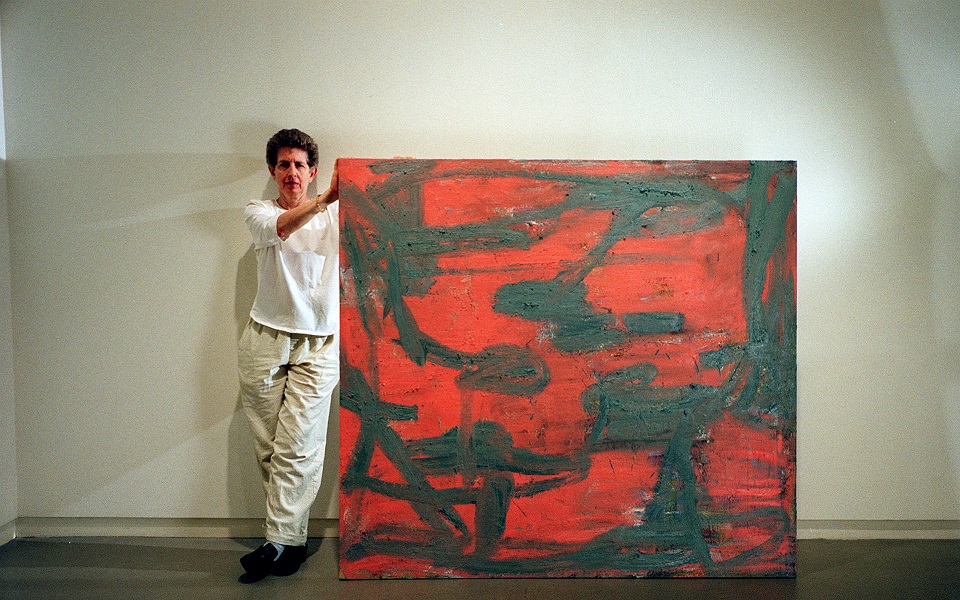
Louise Fishman, a widely exhibited artist who imbued her abstract expressionist paintings and other works with elements of feminism and gay and Jewish identity, died July 26 in the New York City borough of Manhattan. She was 82.
Her spouse, Ingrid Nyeboe, said the cause was complications of an ablation, a heart procedure.
Fishman continually explored new themes and techniques, usually giving her own spin to the male-dominated genre of abstract expressionism.
She was influenced early in her career by the first-generation abstract expressionists, men from the Jackson Pollock era, but by the mid-1960s she began to immerse herself in the gay and feminist movements, joining protest organizations like WITCH — the Women’s International Terrorist Conspiracy From Hell — and sharing ideas and frustrations with other women in a consciousness-raising group. It led her to rethink her art.
“I decided never to paint again unless it came out of my own experience,” she told The Brooklyn Rail in 2012. “Because, I’ve said this many times, being in my woman’s group and examining deeply where everything came from in my work, I realized that I hadn’t had a thought outside of the male tradition of art history and contemporary art history.”
Among the works she produced after that was her “Angry” series, begun in the early 1970s, each canvas a name amid a furious field of paint. It was intended to evoke the anger she imagined was felt by women in her group as well as various public figures. There was “Angry Marilyn,” for Marilyn Monroe, and “Angry Paula,” for gallerist Paula Cooper. And, of course, “Angry Louise.”
After a trip to Central Europe in 1988 with a friend who was a Holocaust survivor, Fishman expanded on the Jewish and Holocaust themes that she had already begun to explore. For some of the works she made in that period, she mixed her paint with ash she had picked up in Auschwitz.
These types of paintings set her apart from the original abstract expressionists.
“Unlike Ab-Ex, which, despite its chest-thumping angst, was largely apolitical, Ms. Fishman hasn’t hesitated to introduce topical experience into her canvases,” John Goodrich wrote in The New York Sun in 2006.
Fishman often ventured away from the brush, experimenting with different ways to apply paint and create works.
“It’s an impulsive process,” she told The Brooklyn Rail. “I’ll be on the street and just find stuff. I won’t even be sure why it interests me, but I’ll leave it in the studio, and sooner or later it’s either a tool or it gets used in some way in the paintings.”
But her interests went far beyond the technical aspects of what could be done with a brush or a palette knife.
“Fishman’s work may be process-driven,” Leah Ollman wrote in 2019 in reviewing an exhibition at the Vielmetter gallery in Los Angeles for The Los Angeles Times, “but her process encompasses questions about self, culture and history as much as materials, color and surface.”
Exploration was a constant in her work.
“I think of myself as a perpetual student,” she told The New York Times in 2000.
Louise Edith Fishman was born Jan. 14, 1939, in Philadelphia. She had art in her genes: Her mother, Gertrude Fisher-Fishman, was an artist, as was an aunt, Razel Kapustin. Her father, Edward, was an accountant.
She grew up in Philadelphia immersed in art thanks to her mother — she would sometimes accompany her mother to drawing classes. Years later she incorporated elements of two games she had played in her youth into grid paintings.
“One was the basketball court, basically a grid, and I knew where my foot was at all times in relation to the foul line and the half-court line,” she told The Philadelphia Inquirer in 2019, when she had an exhibition at Locks Gallery in Philadelphia. “Same thing when I would play bottle tops. You would make a court on the street with chalk, then get down on the street and shoot these bottle tops around these different boxes.”
She studied at the Philadelphia College of Art and the Pennsylvania Academy of the Fine Arts as well as at the Tyler School of Art, part of Temple University. She earned bachelor’s degrees in painting and printmaking and in art education at Temple in 1963, then received a master’s degree in painting and printmaking at the University of Illinois at Champaign in 1965. She moved to New York that year, and was already well into abstract expressionism.
“I felt that abstract expressionist work was an appropriate language for me as a queer,” she said in an interview quoted in a catalog for a 2016 retrospective at the Neuberger Museum of Art in Purchase, New York. “It was a hidden language, on the radical fringe, a language appropriate to being separate.”
In her long career Fishman had dozens of solo shows and was featured in countless group shows. Her artistic forays included abandoning paint-on-canvas for a time in the 1970s and exploring aspects of traditional women’s crafts; in some works she stitched together strips of canvas in quiltlike fashion.
In addition to Nyeboe, whom she married in 2012, she is survived by a brother, S.J. Fishman.
Fishman bought a farmhouse in upstate New York in 1987 and used it as a studio and second home. When fire destroyed that studio in 1990, she spent time in New Mexico, recovering her equilibrium and working with painter Agnes Martin. She began absorbing Chinese philosophies and traditions, and her works from this period show elements of Chinese calligraphy.
She continued to impress critics into the new century.
“Ms. Fishman’s works are not what you would call serene,” Ken Johnson wrote in The Times in 2000, reviewing a show at Cheim & Read in Chelsea. “Each heavily layered, extensively reworked picture feels like a hard-fought standoff between forces of order and chaos.”
This article originally appeared in The New York Times.

